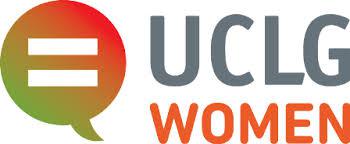
Local governments are key promoters of gender equality and can improve the quality of women´s lives and increase their opportunities, according to UCLG Women. Increasing the number of women in local government, and taking the needs of women into consideration when developing policies and services, is essential to achieving the goals of sustainable development. It is also a question of justice and recognizing gender equality as a human right. But how to improve gender equality ?
The Hague Academy for Local Governance recently posted a few practicial tips for getting more gender balance and improve diversity in one's organisation, thus making it more efficient. They propose taking the following 5 steps :
- Know the facts. What is the situation in your organization? How are the various job categories at your workplace divided between men and women? Are some already reasonably balanced? Are leadership positions as a category more skewed than others? How does your organization compare to its competitors in the same industry or sector? If you’re going to try to fix a problem, you must first be able to describe it. You have to know what the numbers were yesterday if you want to change them today.
- Recognise that gender balance is not exclusively a women’s issue. Convince yourself that the entire organization benefits when its workforce is more diverse. This is a crucial step, and there are many resources you can use to develop your own thoughts. A recent research showed the relationship between gender balance and problem-solving skills in groups.
- Get the leadership of your organization on board. It’s crucial that leadership at the highest level embraces the importance of this issue. If the top leadership of your organization doesn’t see the value of increased diversity, your road towards an improved workplace and improved performance is going to be much longer. This is why it’s important to spend time on step #2, assimilating the best and most relevant arguments you can find.
- Set specific and concrete goals. If your top leadership people come to see better gender balance as a tool for more effectively meeting the organization’s objectives, they should articulate explicit goals. When your institutional leadership sets explicit goals, the rest of the organization understands that action must be taken to try to meet those goals. Programs must be developed and implemented; progress must be measured. Goals such as Become better or Increase our numbers are not enough to trigger action. Get your leadership to use specific equality targets as leadership tools.
- Identify individuals who are motivated to advance and invest in them. Gender imbalance in organizations usually increases as we move higher in the organization. Yet, the importance of gender balance in leadership teams is particularly well documented in the research mentioned above. To improve gender balance at higher levels, individuals who are motivated to move up must be identified. Who is qualified, or close to qualified? How can your organization create the necessary support structures around them so that promotion becomes realistic? Gender imbalance at higher levels in organizations is not mysterious. The most significant barriers for women not making it to the top are structural, such as the subjectivity of peer evaluation or the implicit prejudice yielding a motherhood penalty. Identify individuals who are motivated to advance, and then develop strategies for manoeuvring past structural barriers.
For those who are more interested in the practical integration of gender in all aspects of local governance, click here for more information on the training course Gender Responsive Governance by The Hague Academy for local governance. Deadline for application for this course is February 20, 2015.


You can help spread the message of UCLG on the importance of gender equality at local level by sharing these messages on Twitter, Facebook, or other social media outlets:
Suggested message: Harnessing the potential of women and girls at local level [**uploaded image**]#CitiesWeWant #HabitatIII #GenderEquality
Sources: UCLG Gender Equality Page and The Hague Academy for local governance, quotes of essay by Mr. Curt Rice "6 steps to Gender Equality".
